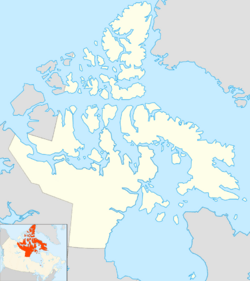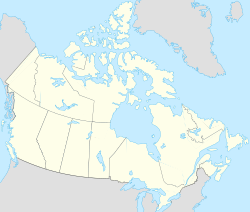Sisters Islands (Nunavut) facts for kids
| Geography | |
|---|---|
| Location | Coronation Gulf |
| Coordinates | 68°24′N 111°36′W / 68.400°N 111.600°W |
| Administration | |
| Territory | Nunavut |
| Region | Kitikmeot |
| Demographics | |
| Population | Uninhabited |
The Sisters Islands are a group of small islands located in the Coronation Gulf. This gulf is a part of the Arctic Ocean in northern Canada. These islands are found south of Victoria Island. They are part of the Kitikmeot Region in Nunavut, Canada.
Other island groups nearby include the Aiyohok Islands, Akvitlak Islands, Bate Islands, Duke of York Archipelago, Miles Islands, Nauyan Islands, Outcast Islands, Outpost Islands, and Richardson Islands.
Contents
Where Are the Sisters Islands Located?
The Sisters Islands are in a very northern part of Canada. They are in the Coronation Gulf, which is a large body of water. This gulf is known for being cold and often covered in ice for much of the year.
The islands are part of Nunavut, which is Canada's largest and newest territory. Nunavut is a vast area mostly covered by tundra and ice. It is home to the Inuit people. The climate here is very cold, with long, dark winters and short, cool summers.
The Kitikmeot Region
The Sisters Islands are specifically in the Kitikmeot Region of Nunavut. This region covers a large area of the central Canadian Arctic. It includes parts of the mainland and many islands. The region is known for its rugged beauty and wildlife.
Life on the Sisters Islands
The Sisters Islands are currently uninhabited by people. This means no one lives there permanently. Like many small islands in the Arctic, they are exposed to harsh weather.
Arctic Wildlife
Even though people don't live on the islands, they might be visited by Arctic animals. Animals like polar bears sometimes travel across the ice. Various types of seals can be found in the surrounding waters. Many migratory birds also use Arctic islands as nesting sites during the summer.
Plants in the Arctic
The plant life on these islands would be typical of the Arctic tundra. This means there are no tall trees. Instead, you would find small shrubs, grasses, mosses, and lichens. These plants are adapted to grow in cold, windy conditions with permafrost (permanently frozen ground) below the surface.
Why Are These Islands Important?
Islands like the Sisters Islands are important for several reasons. They are part of the natural landscape of the Arctic. They provide habitats for wildlife. They also contribute to the unique geography of Canada's northern regions.
Research and Exploration
While not widely known, these islands are part of a vast and important ecosystem. Scientists and explorers often study Arctic islands. They learn about climate change, wildlife populations, and the history of the Earth. These islands offer a glimpse into a remote and untouched environment.



